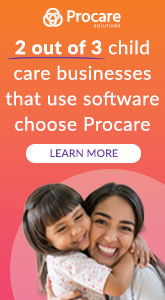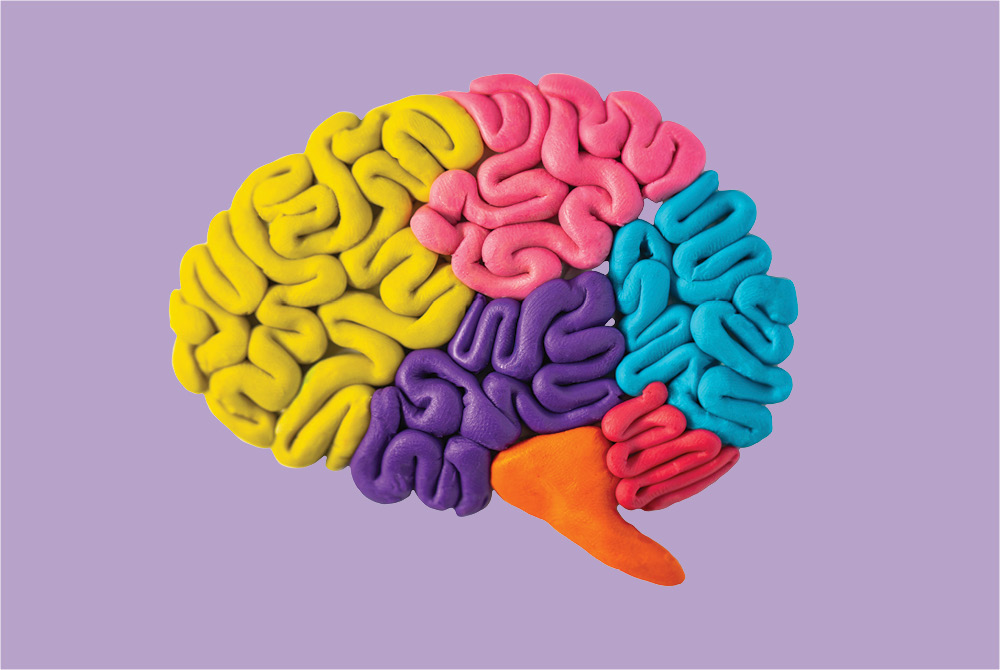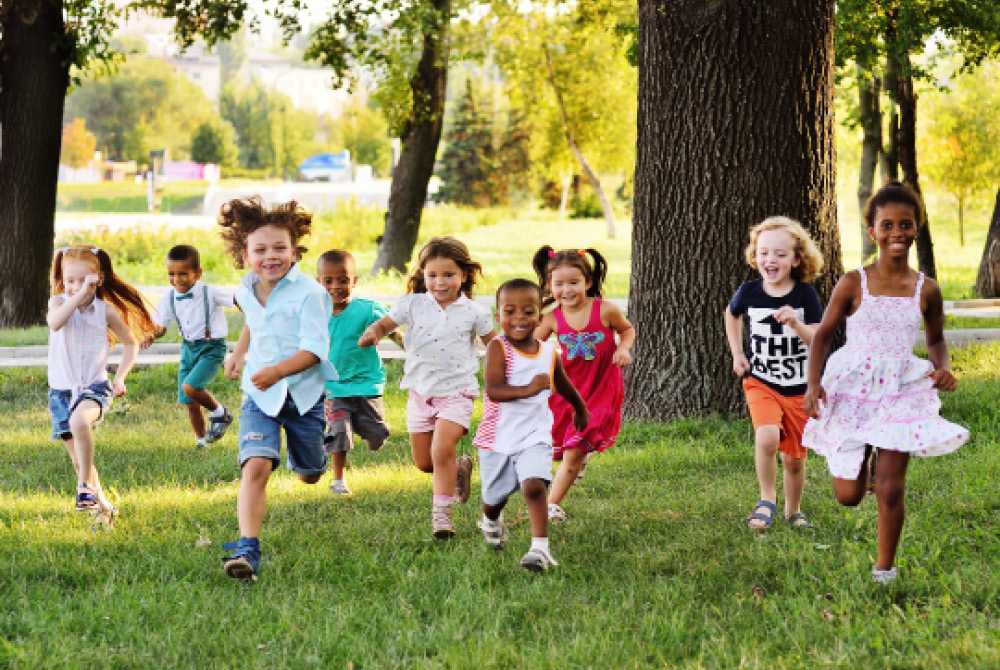“One man’s trash is another man’s treasure.” -Unknown
Did you have a junk drawer or little box of collections growing up? Was it filled with those token items with which you could not part? What treasures did it hold?
A child will pore over the contents of such a drawer or a box. They will turn over old keys in their nimble fingers and peer through the hole punched out of the top. A well-worn rock holds many potentialities in the story yet to be told. Highly coveted items, like a crystal bead or a piece of crinkled, silver paper, have that extra special sparkle. Such treasures can be found in many places. A walk through the neighborhood with a child will yield small troves of cherished, found items. When given time and space, children are natural observers, collectors, tinkerers, inventors, and dreamers.
Educators around the world have ventured back into their childhoods and have been adding found objects and loose parts to their learning environments. Loose parts incite curiosity and invite learners to invent, to create, and to think divergently as children explore limitless potentialities in their play. Teachers, children and families work together to find and collect items to share in their daily explorations. These collections can be easily organized with the help of Tinker Trays.
What are Tinker Trays?
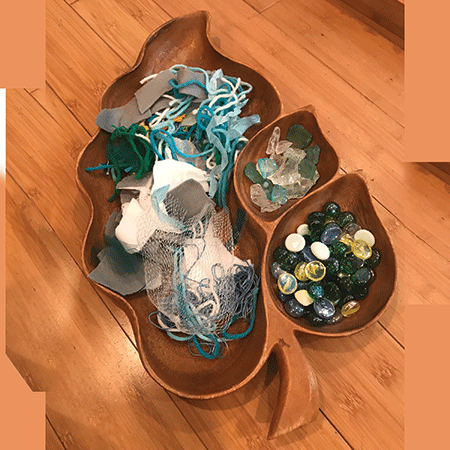 Tinker Trays are boxes or trays with divided sections that are filled with small parts or loose materials. Loose items such as sticks, rocks, shells, beads, yarn, ribbon, cork and more are artfully organized into compartments in the portable tray. Tinker Trays are an attractive organizing tool that can be introduced into different spaces or centers in the classroom. Organization bins or Tinker Trays can be found in dollar stores, homeware stores, craft stores and yard sales. Chip and dip trays, drawer organizers, silverware dividers, tackle box trays and muffin tins all make wonderful, would-be, Tinker Trays.
Tinker Trays are boxes or trays with divided sections that are filled with small parts or loose materials. Loose items such as sticks, rocks, shells, beads, yarn, ribbon, cork and more are artfully organized into compartments in the portable tray. Tinker Trays are an attractive organizing tool that can be introduced into different spaces or centers in the classroom. Organization bins or Tinker Trays can be found in dollar stores, homeware stores, craft stores and yard sales. Chip and dip trays, drawer organizers, silverware dividers, tackle box trays and muffin tins all make wonderful, would-be, Tinker Trays.
Tinker Trays emphasize order as well as the beauty of the objects displayed. Every small compartment in a tray invites the child to touch and to explore its contents. Each small compartment holds the possibility of a world yet to be discovered. Tinker Trays are invitations for visual and tactile exploration that are impossible to resist.
Creating a Tinker Tray
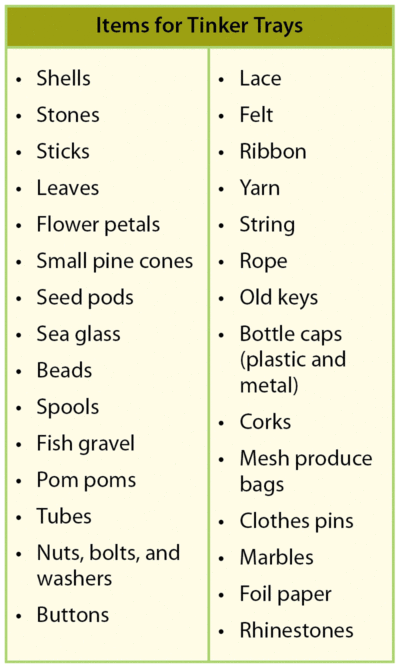 Tinker Trays feature simple or creative combinations of loose items. The items in the trays may be organized by color or color combination. For example, an all red tray filled with various red items or a tray filled with black and white objects. Objects can also be sorted by shape such as a tray full of circular shaped objects or square objects. Trays can also be organized by material property such as natural items, plastic items, paper items, metal items or other property type identified with input from the children.
Tinker Trays feature simple or creative combinations of loose items. The items in the trays may be organized by color or color combination. For example, an all red tray filled with various red items or a tray filled with black and white objects. Objects can also be sorted by shape such as a tray full of circular shaped objects or square objects. Trays can also be organized by material property such as natural items, plastic items, paper items, metal items or other property type identified with input from the children.
Tinker Trays are frequently arranged by a theme or project that the class is exploring. For example, a nature themed tray can hold a variety of leaves, sticks, flower petals and stones. A beach themed tray may feature shells of different shapes and sizes, sea glass, yarn in sea colors and netting repurposed from produce bags.
Choosing trays that are a neutral color such as white, clear, black or made of wood is intentional. Neutral Tinker Trays add a complimentary backdrop for the colorful objects that will be displayed in the trays. The items in the trays should be the main feature, drawing in the focus of the child.
Home and School Connection: Collecting Materials Together
Children love to gather and collect loose parts. Teachers could suggest items that children might bring from home to add to the school’s Tinker Tray collections. The lists can be connected to current classroom explorations or it can be a general list of items the class would like to collect. Ask families to look through old, cast-off items around their home. No materials need to be purchased when collecting treasures for Tinker Trays. Reusing and repurposing items from home teaches children to look for new possibilities with scrounged or found objects.
Organizing and Tinkering Lead to STEAM
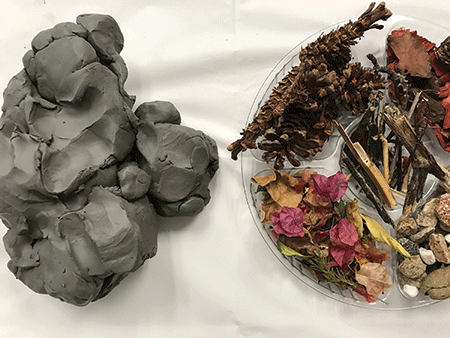 Children are excited to bring materials from home. Many will eagerly participate in the organization of the collection. It is best to have storage containers or Tinker Trays available during this process. Sorting objects is a great learning opportunity where children use critical thinking and observation skills to evaluate and compare the objects. As they classify and sort the treasures, math and science concepts are explored including: comparing, classifying, sorting, identifying shapes, size and colors, and determining like properties such as wood, glass, metal, paper and plastic. Further, repurposing items from home emphasizes an environmentally friendly approach to gathering and reusing objects.
Children are excited to bring materials from home. Many will eagerly participate in the organization of the collection. It is best to have storage containers or Tinker Trays available during this process. Sorting objects is a great learning opportunity where children use critical thinking and observation skills to evaluate and compare the objects. As they classify and sort the treasures, math and science concepts are explored including: comparing, classifying, sorting, identifying shapes, size and colors, and determining like properties such as wood, glass, metal, paper and plastic. Further, repurposing items from home emphasizes an environmentally friendly approach to gathering and reusing objects.
Building, creating, designing and making patterns come naturally to all children. Children need time, space, and open-ended materials and their inner engineer, designer, and storyteller will take over. As loose parts are integrated into block structures they become part of the developing storyline and provoke further verbal fluency. Tinker Trays naturally spark ingenuity in artistic endeavors. Tinker Trays added to various areas throughout the classroom infuse another layer of invention and exploration into the play.
As the children help to organize the trays, they can also help set up the ground rules for the use of the objects. When and how will they be used? What about cleaning up the items? Start with introducing one tray, along with an art project, to help the children understand the intent and purpose of the trays and the materials collected.
ADVERTISEMENT
Tinker Trays Are Portable
One of the best features of Tinker Trays is that they are portable, which means they can be moved around the room in response to the classroom needs. I toured a classroom where the teacher had purchased ten chip and dip trays at a dollar store. Each tray was filled with loose parts and the trays were stacked in a cabinet. I observed her walking around the room with the stack of trays, setting them out in the different areas of the classroom. Other teachers leave the trays out in learning centers or place them on a table with glue and scissors added to the tray. The portability of Tinker Trays assists the clean-up and storage processes.
Tinker Tray Pairing
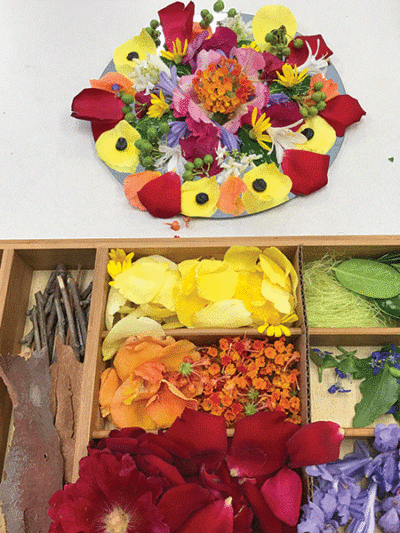 Tinker Trays can be paired with other classroom materials to enhance learning. Set out a Tinker Tray with another open-ended material such as clay, playdough, a sand tray, mirrors, picture frames, a light table, pieces of felt or paper, or a sensory bin and watch the creativity unfold. Divergent thinking and verbal fluency are enhanced in this type of exploration as children encounter numerous creative possibilities and describe their experiences.
Tinker Trays can be paired with other classroom materials to enhance learning. Set out a Tinker Tray with another open-ended material such as clay, playdough, a sand tray, mirrors, picture frames, a light table, pieces of felt or paper, or a sensory bin and watch the creativity unfold. Divergent thinking and verbal fluency are enhanced in this type of exploration as children encounter numerous creative possibilities and describe their experiences.
Clay or Playdough: Clay is a great material to pair with a Tinker Tray filled with natural materials. Gray or red clay can be placed in small balls or squares for children to poke, decorate and manipulate with the natural items found in the Tinker Tray. Just like clay, playdough can be set out next to the tray or in a compartment of the Tinker Tray. Try white playdough to keep the exploration open-ended.
Sand Tray: Another natural pairing is a small bin or flat tray filled with play sand. Tinker Trays filled with natural materials work in harmony with a sand tray. Beach, construction, or simply a nature-themed tray complement a sand tray.
Mirrors: Place a Tinker Tray next to a mirror to see what happens. Mirrors offer a new perspective to the loose parts. There are many different types of mirrors to offer children such as round mirrors, rectangular mirrors, wardrobe mirrors, trays with mirrored bottoms, framed mirrors and unframed mirrors
Light Table: Light tables exploit new aspects of the materials offered in a Tinker Tray. Choose a Tinker Tray full of materials intentionally selected based on their potential interactions with light. Some objects may appear opaque while others become more translucent, reflecting the light source. New discoveries will be made as the materials and the light become tools for inquiry and exploration.
Picture Frames: Empty picture frames or paper frames paired with Tinker Trays invite children to create designs within and around the frames. Small frames offer the children the opportunity to work on their own. Large picture frames invite collaborative and group exploration.
Felt or Paper: While empty picture frames offer an external border to play within, a felt circle or paper rectangle offers a base canvas. Select felt or paper of a dark neutral color such as black, brown or white. Black felt intensifies the contrast of bright objects from a Tinker Tray.
Sensory Bin: Tinker Trays can also be placed next to sensory bins. The textures, shapes and colors of objects in the Tinker Tray infuse new layers of sensory experiences to the sensory bin. The portable quality of a Tinker Tray makes for easier clean up and overall organization.
Take A Photograph
Teachers often ask, “Can the children glue the materials from the Tinker Tray down and take it home?” Children can be given glue and paper to make collages to take home; however, Tinker Trays and loose parts invite ongoing, process focused play. Children are satisfied with open-ended expression through exploring materials in Tinker Trays. Teachers can take a photo, capturing the evolving designs and inventions created by children. Photos can be sent home or posted in the classroom to encourage reflection and discussion.
Tinker Trays are more than a classroom organization tool—they are an invitation to play, to explore, to create, to imagine and to learn. They are filled with potentialities and narratives yet to be discovered. It is amazing to see how much magic one small tray can hold.
Joleen Voss-Rodriguez is a professor of child development and the director of the Program for Accelerated College Education at Pierce College in Woodland Hills, CA. She has worked with children and families for over 30 years in early care and education, child mental health, parent education, and early intervention. She has presented on various topics in education at NAEYC and CAEYC conferences, for the U.S. Department of Education, and for educators in the United Kingdom. She is also an author for Out of the Box Training Kits offered through Exchange. Her commitment to sharing Reggio-inspired practices with parents and educators led to the creation of the Facebook and Instagram pages called The Inspired Child.
Related
ADVERTISEMENT







